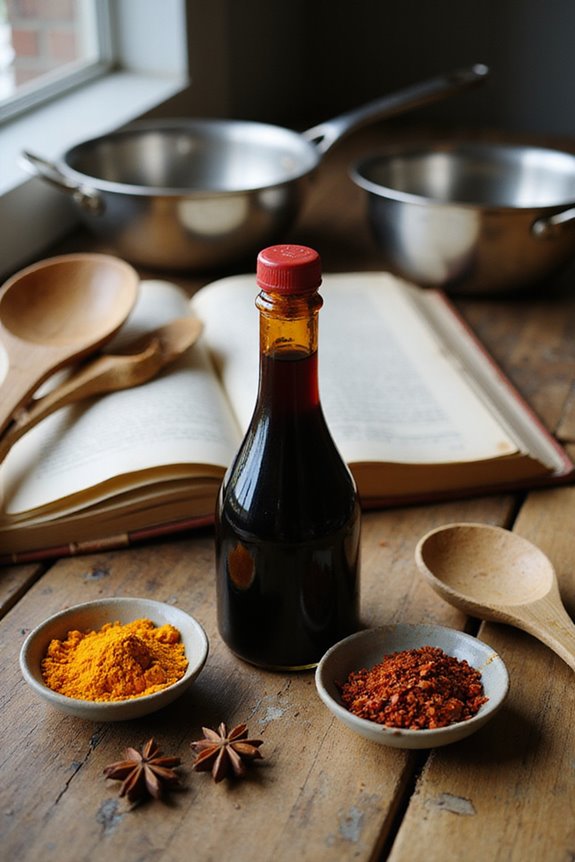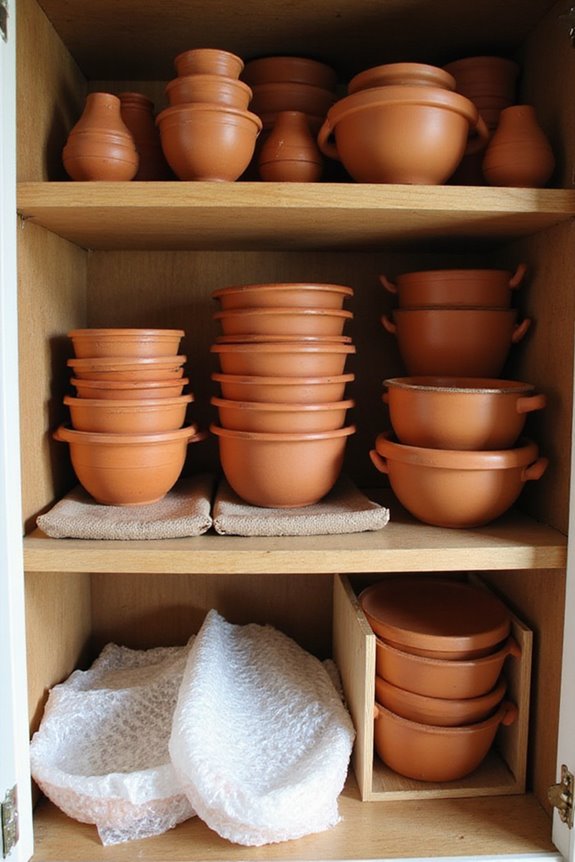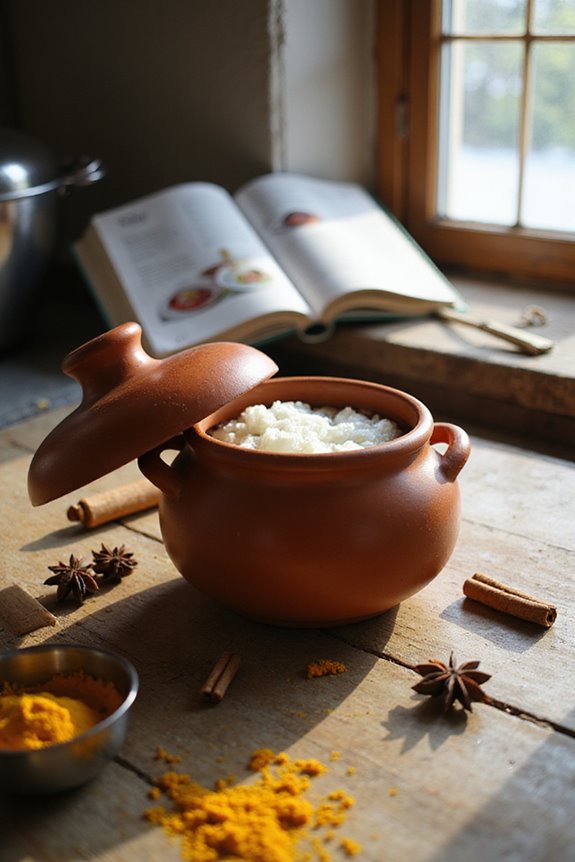To store mushrooms properly, let’s keep them magical and delightful! First, we must cool them down to around 32°F to reduce spoilage. Use breathable packaging, like paper bags, to keep mushrooms fresh—just avoid plastic bags to prevent wilting. For long-term storage, try vacuum sealing with Mylar bags. Oh, and don’t wash them until you’re ready to cook—it’s like a surprise party for your mushrooms! Stick around to uncover more fun tips on making the most of your fungi!
Key Takeaways
- Store mushrooms in the refrigerator, ideally at around 32°F, to maximize their freshness and longevity.
- Use breathable packaging like paper bags to prevent moisture buildup and avoid spoilage during storage.
- Keep mushrooms unwashed until you’re ready to use them, as washing can promote quicker spoilage.
- For long-term storage, consider vacuum sealing and using Mylar bags with oxygen absorbers to prevent oxidation.
- Maintain a cool, dry environment for wild mushrooms, storing them on the countertop in paper bags for best results.
Importance of Cooling and Temperature Control
When it comes to keeping our delightful mushrooms fresh, we can’t underestimate the importance of cooling and temperature control! Using proper cooling methods, like vacuum and hydrocooling, works wonders. These methods quickly chill our mushrooms, reducing spoilage and keeping them deliciously delightful.
- Vacuum Cooling: Fast and efficient, it cuts cooling time down to just 0.3-2 hours!
- Hydrocooling: Immersing them in near-freezing water works like a cool ice bath after holiday feasts.
A temperature impact is essential too! Storing mushrooms at about 32°F keeps them fresh for weeks. Let’s aim to avoid those warmer temps—storage above 4°C makes mushrooms sad and short-lived! Additionally, maintaining proper cooking methods ensures the longevity of various fresh ingredients, including mushrooms. So, let’s keep our mushrooms cozy and magical!
Effective Packaging Materials and Atmosphere

Packaging Types Matter
Choosing the right packaging is key. We can opt for durable plastic clamshells for button mushrooms or padded paper bags for fragile portobellos.
Moisture Management
Moisture is a mushroom’s best friend, but too much can lead to spoilage! Breathable materials like paper and mesh let moisture escape, while proper ventilation in plastic keeps things balanced. Bamboo steamer parchment papers (which offer non-stick properties) can be a great option for lining containers when storing mushrooms to prevent sticking.
Sweet Tips
- Avoid overpacking to prevent bruising.
- Add absorbent liners for extra humidity control.
- Feel good about eco-options like mycelium-based packaging—it’s super sustainable!
Let’s pack smart and keep those mushrooms delightful!
Short-term Storage Methods
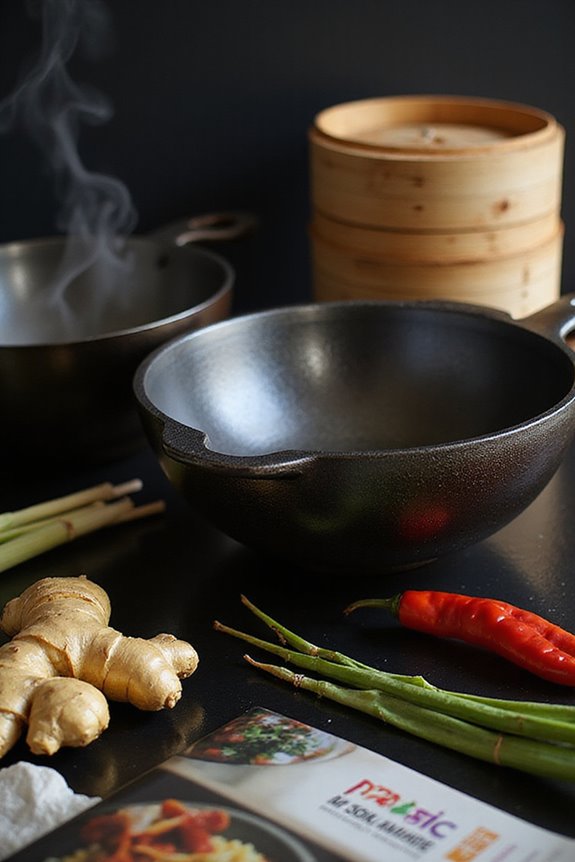
If we want our mushrooms to stay fresh and flavorful, employing the right short-term storage methods is vital.
Countertop Storage
For some wild mushrooms, a magical countertop storage method works wonders! Keep them in a cool, dry area away from sunlight for up to three days. Avoid plastic bags, or you might end up with sad, wilted mushrooms! To ensure optimal flavor, consider keeping temperature control in mind, as it plays a crucial role in preserving their freshness.
Paper Bag Technique
When refrigerated, let’s use paper bags instead of plastic. These delightful bags let mushrooms breathe, reducing moisture and keeping them fresh for about ten days. Remember, it’s important to store them unwashed—just like we save the holiday clean-up until after the festivities!
Long-term Preservation Techniques
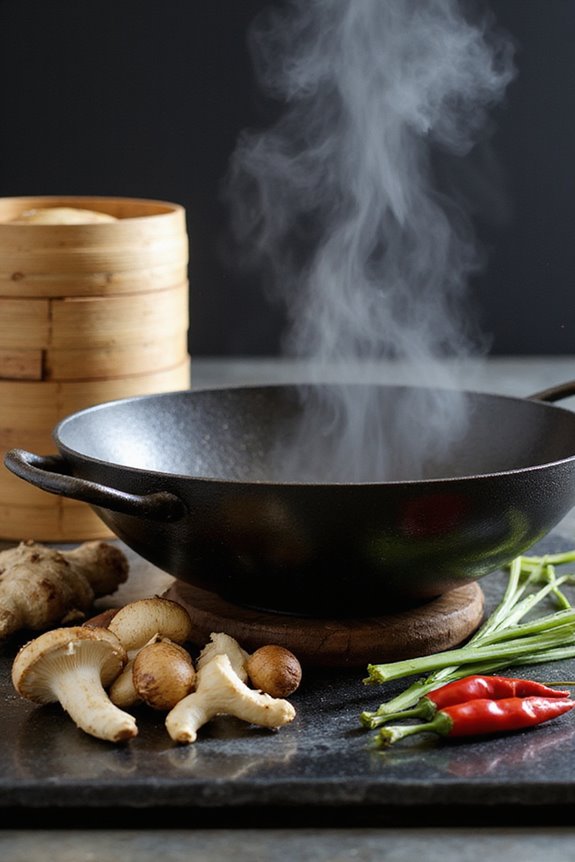
To guarantee mushrooms bring delight to our dishes long after we’ve harvested them, mastering long-term preservation techniques is essential!
- Vacuum Sealing: This method removes air and considerably slows down oxidation. Perfect for both fresh and dried mushrooms, it keeps them vibrant and flavorful.
- Mylar Bags: Using these durable, light-tight bags helps protect our mushrooms from oxygen damage. Add oxygen absorbers inside, and we’re creating an ideal environment for storage that can last years!
Combining vacuum sealing with Mylar bags offers us magical preservation! Consider supplementing with silica gel packs to control moisture. With these techniques, we’ll enjoy our mushrooms even during the coldest winter months—like a delightful taste of summer on our plates! Additionally, monitoring temperature and humidity levels during storage ensures optimal conditions to maintain freshness.
Moisture Control and Drying
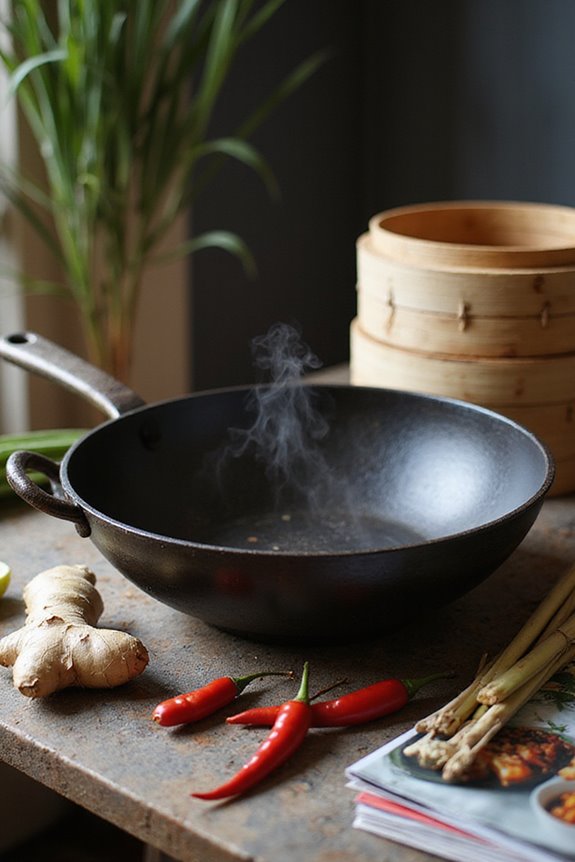
Next, let’s explore some magical drying methods. Air drying in a well-ventilated spot or using a dehydration rack guarantees even moisture removal. For those fancy occasions, try freeze-drying to retain nutrients!
Remember:
- Maintain 85%-95% humidity for freshness.
- Keep things cooler with moisture management! Additionally, proper moisture management techniques are crucial to enhancing the longevity and flavor of your food items when storing.
Effects on Nutritional and Antioxidant Properties
When we plunge into the world of mushrooms, it’s exciting to discover how various storage and cooking methods affect their magical nutritional and antioxidant properties. To keep these delightful fungi at their best, here are some tips for nutritional retention:
- Drying over Freezing: Drying mushrooms boosts protein and antioxidants better than freezing.
- Cooking Matters: Frying keeps more nutrients compared to boiling or microwaving—let’s avoid those soggy mushy moments!
- Freshness is Key: Store in the fridge within a week, and opt for a brown paper bag to absorb excess moisture. Additionally, using high smoke point oils like sesame oil when cooking can help preserve their nutritional value while enhancing flavor.
Frequently Asked Questions
Can I Wash Mushrooms Before Storing Them?
We recognize the temptation to wash mushrooms, but it’s best to avoid it before storage. Instead, let’s use gentle mushroom cleaning methods to prevent washing implications that can lead to spoilage and disappointment.
How Long Can Cooked Mushrooms Be Stored?
Have you ever wondered how to keep our delicious cooked mushrooms fresh? With proper refrigeration tips and airtight storage containers, we can enjoy them for 3 to 5 days. Let’s savor every bite!
What Signs Indicate Spoiled Mushrooms?
When identifying freshness in mushrooms, we should look for key signs of mushroom spoilage, like sliminess, discoloration, or unpleasant odors. Trusting our senses helps guarantee we only enjoy the best and safest mushrooms together.
Is It Safe to Freeze Fresh Mushrooms?
Yes, it’s safe to freeze fresh mushrooms if we follow proper freezing techniques. By prepping them carefully, we can guarantee excellent quality for later use in our delicious meals together. Let’s enjoy those mushrooms!
Can I Store Mushrooms in a Paper Bag?
Let’s face it—who wants wilted mushrooms? Storing them in a paper bag offers amazing benefits for mushroom freshness. It keeps moisture at bay and allows air to circulate, ensuring we enjoy every delicious bite.


